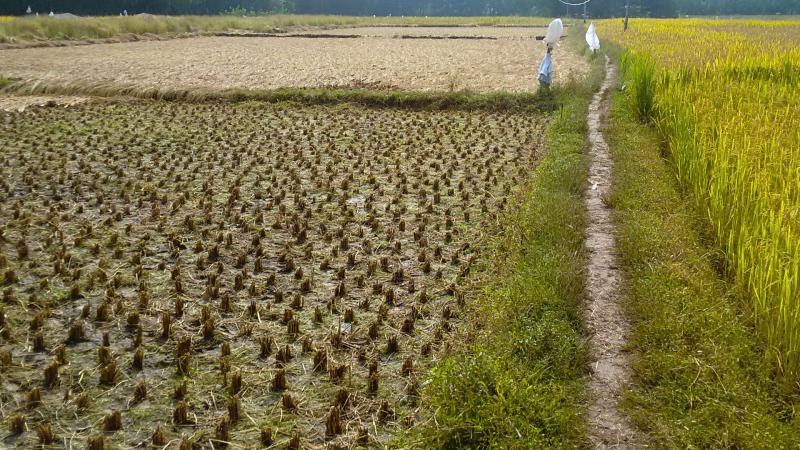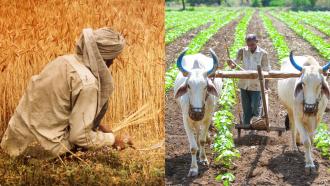
The Indo-Gangetic Plain, a vast and fertile region, is often referred to as the breadbasket of India. For decades, its farmers have relied on intensive rice-wheat cropping systems to feed millions of people. However, as climate change intensifies, this agricultural powerhouse is facing a crisis, with water tables dropping at alarming rates and life-sustaining soil degrading. Traditional farming methods, while productive, are resource-intensive, consuming vast amounts of energy, contributing to greenhouse gas emissions, and depleting precious groundwater resources. As farmers continue to battle extreme weather and as the air and water quality decline further, the breadbasket will struggle to produce enough, demanding urgent solutions.
A new study by researchers from ICAR-Central Soil Salinity Research Institute, ICAR-Indian Institute of Soil and Water Conservation, and collaborators offers some hope. Their research demonstrates how climate-smart agriculture practices (CSAPs) can transform farming in North-western India, making it both productive and environmentally sustainable.
Did You Know? Traditional puddling (ploughing in ponded fields) before transplanting rice can damage soil structure and accelerate oxidation-reduction cycles. |
The researchers conducted a long-term field experiment at the ICAR-Central Soil Salinity Research Institute in Karnal, India, a site representative of the sub-tropical and semi-arid climate of the Indo-Gangetic Plain. The study compared six different farming scenarios over six years, from 2016-17 to 2021-22, to identify the most effective strategies for sustainable farming. The six distinct scenarios each also had three replicates to ensure the robustness of the data. These scenarios varied in tillage methods (conventional vs. zero-tillage), crop establishment techniques (transplanting vs. direct seeding), cropping systems (rice-wheat vs. maize-wheat with mungbean), and water management (flood irrigation vs. subsurface drip irrigation).
The focus was on conservation agriculture (CA), which has three main principles: minimal soil disturbance (zero or minimum tillage), permanent soil cover (crop residues), and diversified crop rotations. Zero tillage, for example, reduces the need for multiple passes of heavy machinery, saving fuel and energy, and preserving soil structure. Leaving crop residues on the soil surface helps retain moisture, suppresses weeds, and enriches soil organic matter, fostering a healthier soil ecosystem. Diversifying crops, such as including mung beans in the rotation, improves soil health, nutrient cycling, and can break pest and disease cycles, thereby enhancing overall system resilience.
The team integrated CA with subsurface drip irrigation (SSD). Unlike traditional flood irrigation, where water is often lost to evaporation and deep percolation, SSD delivers water directly to the plant roots through buried drip lines. This precise water delivery minimises waste and ensures plants receive water and nutrients exactly when and where they need them. For nutrient management, they used fertigation, which involves applying fertilisers through the drip system, which further enhanced nutrient use efficiency.
To quantify the environmental impacts, the team measured irrigation water applied using water meters. Energy inputs and outputs were calculated using energy equivalents for various farm operations and materials. Greenhouse gas emissions (CO2, N2O, CH4) were estimated using models such as the Mitigation Options Tool (CCAFS-MOT) and IPCC guidelines, considering factors including fertiliser production, diesel use, and residue burning. Soil organic carbon (SOC) sequestration was also measured to understand the carbon storage capacity of different systems. This comprehensive data collection and analysis enabled them to compare the scenarios not only on yield, but also on a holistic set of environmental and economic indicators.
The study found that the standout performer was a system combining zero-tillage maize, zero-tillage wheat, and zero-tillage mungbean, all irrigated with subsurface drip irrigation (Sc6). This innovative approach achieved remarkable results across the board. For instance, Sc6 increased the rice equivalent yield (a method for comparing the productivity of different crops) by an impressive 22.2% compared to the traditional farming method (Sc1). The total system yield, encompassing all crops, soared by 35.6%.
Apart from increasing yield, the method also addressed efficiency and environmental impact. The system's water footprint, a measure of the water used to produce a kilogram of crop, was drastically reduced by 88.5% in Sc6 compared to Sc1, dropping from 1,642 litres per kilogram to a mere 189 litres per kilogram. Energy efficiency also saw significant improvements. Scenario 6 emerged as the most energy-efficient scenario, achieving the highest energy use efficiency of 15.69, meaning it generated significantly more energy output for every unit of energy input. The change translates to lower operational costs for farmers and reduced reliance on fossil fuels, delivering the highest net returns to farmers, a 57% increase over the traditional method.
An added advantage from an environmental perspective was that Sc6 significantly reduced the net global warming potential (GWPn) by 93%, decreasing it from 7766 kg CO2 equivalent per hectare in Sc1 to 571 kg CO2 equivalent per hectare. This massive reduction in greenhouse gas emissions is a direct contribution to mitigating climate change. The carbon footprint, another key environmental indicator, also saw a staggering 95% reduction.
The study demonstrates the synergistic benefits of combining CA principles with subsurface drip irrigation, which addresses some of the operational limitations and water losses associated with surface drip systems. The inclusion of maize as an alternative to rice in the cropping system also offers a novel pathway for water-scarce regions.
However, the study also acknowledges several challenges to widespread adoption. The initial high cost of installing SSD systems can be a significant barrier for smallholder farmers, who often lack access to capital or credit. The absence of a clear national policy supporting CA and SSD, coupled with highly subsidised (and often nearly free) electricity for irrigation, disincentivises farmers from investing in more efficient water-use technologies. Traditional farming practices are deeply entrenched, passed down through generations, making behavioural change difficult without strong incentives and education. Furthermore, there's a need for greater technical know-how among farmers and extension workers, as well as the development of suitable crop varieties. The study also notes that while zero-tillage direct-seeded rice (ZT-DSR) can lead to initial yield penalties, integrating SSD can help mitigate this by providing optimal moisture and nutrient conditions.
The study's findings provide a clear roadmap for achieving sustainable agriculture in North-western India and similar regions worldwide. By adopting CSAPs, particularly those integrating zero-tillage maize-wheat-mungbean with subsurface drip irrigation, farmers can significantly increase their yields and profitability, ensuring food security for a growing population.
This article was written with the help of generative AI and edited by an editor at Research Matters.






